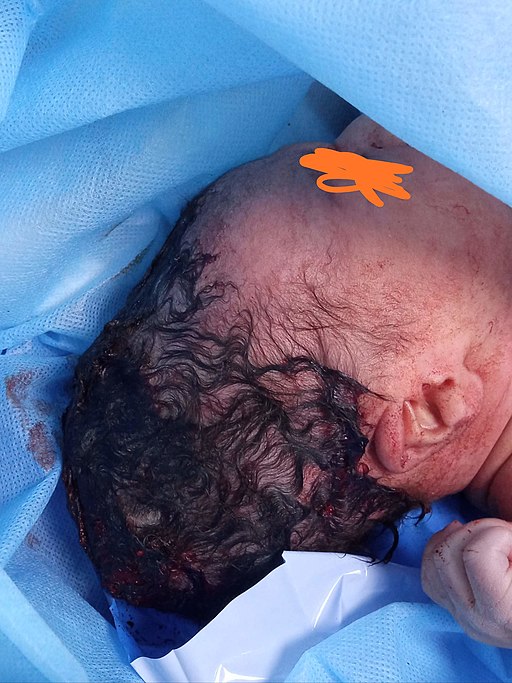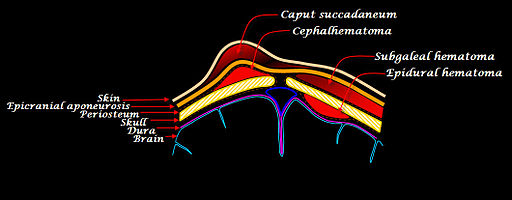🍼 Birth Injuries – Caput Succedaneum vs Cephalohaematoma
🔑 Key Learning
-
Both are common scalp swellings in newborns following delivery trauma
-
Caput succedaneum is soft, pitting oedema that crosses suture lines, present at birth, and resolves quickly
- Caput is due to pressure-induced oedema
-
Cephalohaematoma is a firmer, well-defined blood collection that does not cross sutures, appears later, and resolves slowly
- Cephalohaematoma is due to subperiosteal bleeding
-
Can cause complications like jaundice
🧬 Caput Succedaneum
Pathophysiology
-
Caused by pressure on the foetal head against the cervix during labour
-
Results in oedema of the scalp’s subcutaneous tissue, external to the periosteum
👀 Clinical Features
-
Present at birth
-
Soft, pitting oedema
-
Crosses suture lines
-
Resolves within a few days
 Caput Succedaneum. Muago, CC0, via Wikimedia Commons
Caput Succedaneum. Muago, CC0, via Wikimedia Commons
🧬 Cephalohaematoma
Pathophysiology
-
Caused by rupture of blood vessels crossing the periosteum during delivery
-
Leads to blood accumulation between the periosteum and skull bone
👀 Clinical Features
-
Appears hours to days after birth
-
Firm, with well-defined edges
-
Does NOT cross suture lines
-
Resolves over weeks to months
-
May lead to complications: jaundice (due to haemolysis), infection, or calcification
 AMH Sheikh, CC BY-SA 3.0, via Wikimedia Commons
AMH Sheikh, CC BY-SA 3.0, via Wikimedia Commons
📝 Exam Clues & Clinchers
-
Swelling present at birth, soft, crosses sutures → Caput succedaneum
-
Delayed onset, firm swelling, does not cross sutures → Cephalohaematoma
-
Prolonged resolution + jaundice risk → suspect Cephalohaematoma


